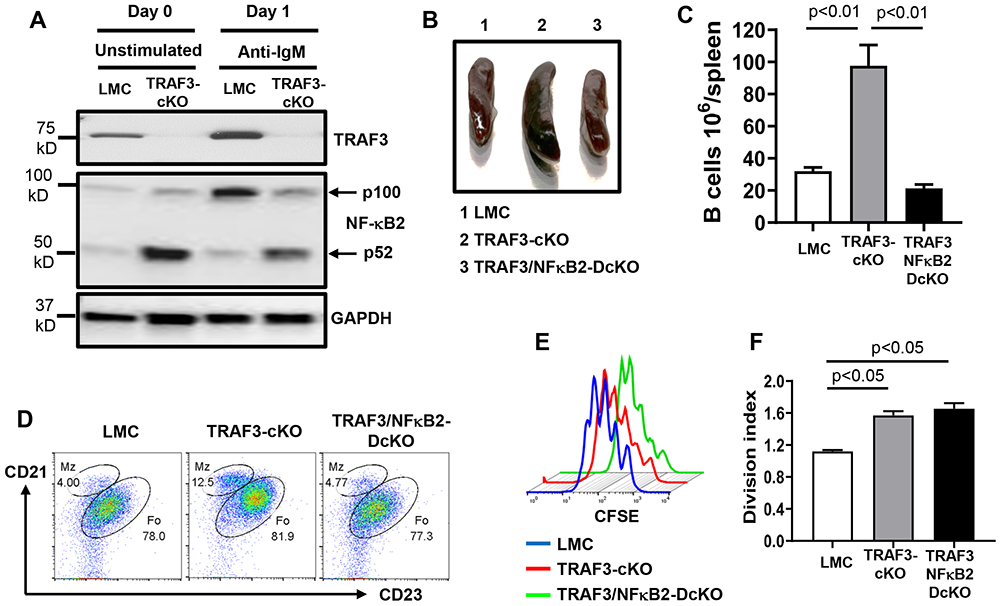Figure 4. TRAF3 restricts the processing of NF-κB2 p100 induced by BCR engagement and an essential role of NF-κB2 in splenomegaly and B cell expansion caused by TRAF3-deficiency.

(A) Representative Western blot data showing precursor (p100) or active (p52) NF-κB2 and TRAF3 expression in indicated B cells that are either unstimulated (day 0) or stimulated (day 1) by anti-IgM/IL-4 for 1 day. GAPDH as loading control. (B) Representative image of mouse spleens with indicated genotypes (group 1-3, n=5/group, 8-12 weeks old). (C) Quantification of the number of splenic B cells in mice with indicated genotypes (n=5/group). (D) Representative flow data showing the profiles of MZ and FO B cells in mice with indicated genotypes (n=5/genotype). B cells were gated for B220+IgM+ double positive population (E) Proliferation pattern of B cells with indicated genotypes that were stimulated by anti-IgM/IL-4 for 4 days. (F) Quantification of division index from triplicates of one representative experiment in anti-IgM/IL-4 stimulated B cells with indicated genotypes. TRAF3-cKO, CD19Cre-Traf3f/f; TRAF3/NF-κB2-DcKO, CD19Cre-Traf3f/f-NF-κB2f/f. Data are representative of 3-6 independently repeated experiments.
